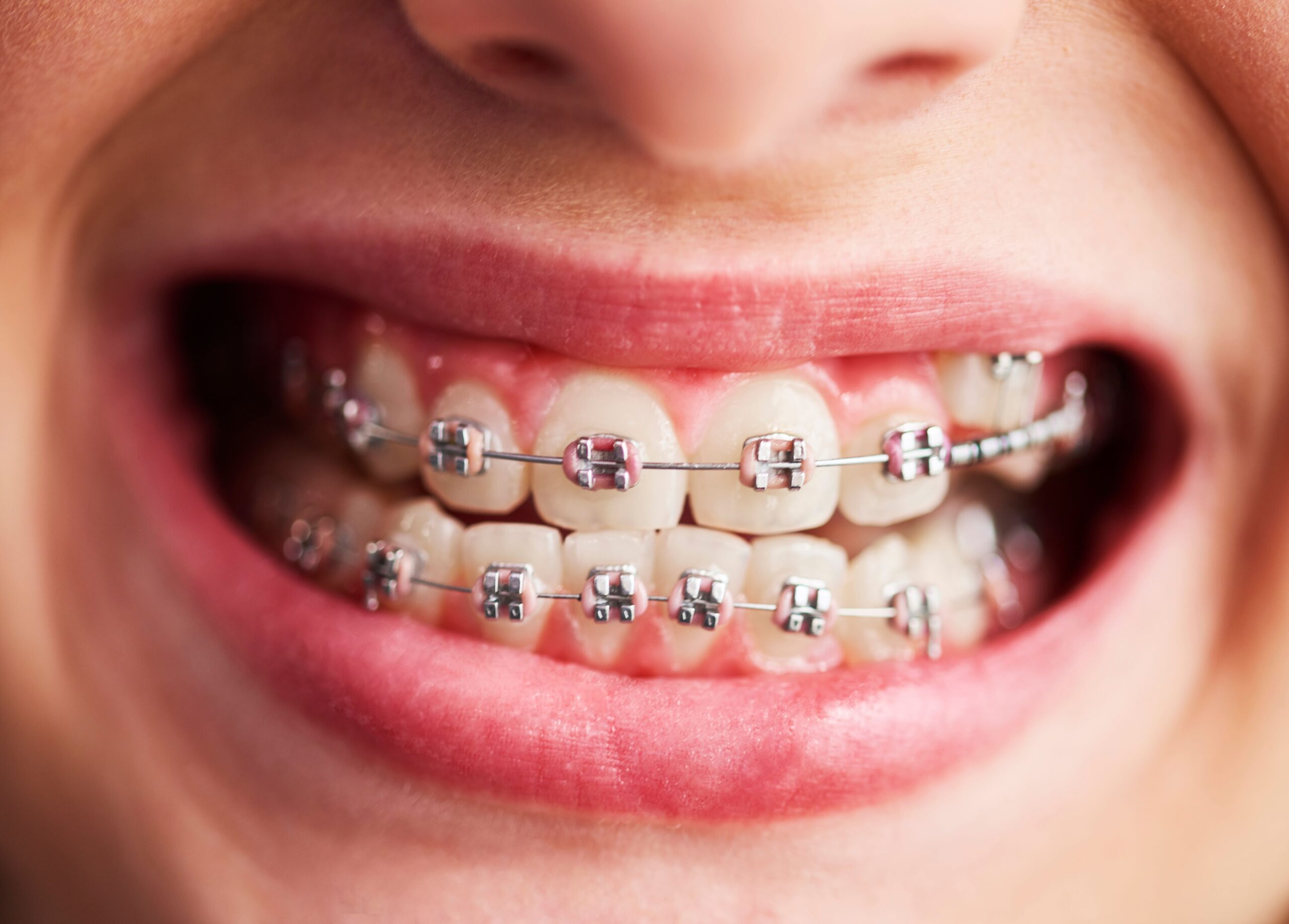orthodontics Treatment: Improving Your Smile, Health, and Quality of Life
Orthodontics goes beyond the aesthetics of straightening teeth. It plays a critical role in ensuring proper bite alignment, which in turn affects how you chew, speak, and even breathe. Misaligned teeth can lead to oral health problems such as gum disease, tooth decay, and even jaw pain.
What is Orthodontics?
Orthodontics is a specialized field of dentistry that focuses on diagnosing, preventing, and treating dental and facial irregularities. It involves correcting misaligned teeth and jaws, helping to improve not only appearance but also overall oral health. If you’ve ever wondered why some people have braces or clear aligners, orthodontics is the answer
The Role of Orthodontists
An orthodontist is a dentist with additional specialized training in aligning teeth and correcting bite issues. These experts use various techniques and appliances, such as braces and aligners, to move teeth into the desired position, ultimately improving both functionality and aesthetics.
Orthodontic care not only boosts your smile but also improves the health and function of your teeth. Straight teeth are easier to clean and less likely to develop cavities and gum disease. A well-aligned bite prevents jaw issues like TMJ disorders, making orthodontics vital for long-term dental health.
Modern Advancements in Orthodontic Techniques
Orthodontics dates back to ancient civilizations, where early forms of braces were used. Egyptians, for instance, used crude metal bands around their teeth. Over the centuries, the field has evolved significantly. Today’s orthodontic methods are sophisticated and patient-friendly. From the introduction of stainless-steel braces in the 20th century to clear aligners like Invisalign, orthodontics has made great strides in offering more comfortable and efficient treatments.
Common Orthodontic Issues
One of the most common orthodontic problems is misaligned teeth, which can affect your oral health in various ways. Teeth misalignment can be caused by genetic factors, thumb-sucking habits during childhood, or even losing baby teeth too early. Misaligned teeth make it harder to maintain proper oral hygiene, leading to increased risks of plaque buildup, tooth decay, and gum disease.
- Bite Problems: Orthodontics also addresses bite issues that can interfere with normal chewing and speaking.
- Overbite: An overbite occurs when the upper teeth significantly overlap the lower teeth. It can lead to excessive wear on your teeth and even gum problems.
- Underbite: An underbite happens when the lower teeth extend beyond the upper teeth, affecting your appearance and how you chew your food.
- Crossbite: In a crossbite, some upper teeth sit inside the lower teeth rather than outside. It can cause tooth wear, gum recession, and difficulty chewing.
Orthodontic Treatments
Braces are the most common orthodontics treatment and come in several types. These are the traditional braces made of high-grade stainless steel. Though visible, they are highly effective for correcting severe misalignments. Ceramic braces are less noticeable because they blend in with the natural color of your teeth. They’re a more aesthetically pleasing alternative to metal braces.
Clear Aligners
Clear aligners, like Invisalign, have gained popularity due to their discreet appearance and convenience. Invisalign is one of the leading brands, offering nearly invisible trays that gradually shift your teeth into place. Clear aligners are customized to fit your teeth. They apply gentle pressure over time to move your teeth, and you can remove them while eating and brushing.
Importance of Retainers After Treatment
After braces or aligners, retainers are necessary to maintain your newly aligned smile. Retainers help prevent your teeth from shifting back to their original position, ensuring long-lasting results. You can choose between fixed retainers that stay in your mouth or removable ones that can be taken out for cleaning.
The Benefits of Orthodontic Treatment
Orthodontic treatment offers a range of advantages that go beyond simply achieving a beautiful smile. While aesthetics is a significant factor, the functional and health benefits of orthodontics are equally important. Whether you’re considering braces, clear aligners, or retainers, here are the key benefits of orthodontic treatment:
Boosting Confidence Through a Better Smile
One of the most visible benefits of orthodontic treatment is the improvement in the appearance of your teeth. Straight teeth are often associated with a more attractive smile, which can have a positive impact on your self-confidence and social interactions.
A straighter smile can make a significant difference in how you feel about yourself. When you’re happy with your smile, you’re more likely to engage in social situations and smile more often, which can improve both your personal and professional life.
Enhanced Oral Health
Orthodontics doesn’t just improve the look of your teeth; it also enhances your overall oral health. Misaligned teeth can create spaces that are difficult to clean, leading to plaque buildup, which increases the risk of cavities and gum disease.
Straight teeth are easier to clean, making it simpler to maintain good oral hygiene. Proper alignment reduces the chances of food getting trapped between teeth, which can lead to tooth decay and gum disease over time.
Functional Benefits
Orthodontic treatment also improves the function of your teeth and jaws. Many people don’t realize that a misaligned bite can cause a variety of issues that extend beyond the appearance of the smile.
When your bite is aligned properly, you can chew your food more efficiently, which is essential for proper digestion. In addition, correcting bite issues can also improve speech, as misaligned teeth can cause certain speech impediments.
Reduced Risk of Dental Injuries
Teeth that protrude or are misaligned are more vulnerable to accidental damage. Orthodontic treatment helps bring these teeth into the correct position, reducing the likelihood of chipping or breaking them in an accident. Misaligned teeth and jaws can lead to temporomandibular joint (TMJ) disorders, which cause pain in the jaw, headaches, and difficulty chewing. Orthodontic treatment helps to correct bite issues, relieving pressure on the jaw joints and preventing these painful disorders.
Long-Term Dental Health
orthodontics treatment provides long-term benefits by helping maintain the alignment of your teeth. By straightening your teeth and correcting your bite, you ensure that your teeth remain in the best possible position as you age, which can prevent future oral health problems
What to Expect During Orthodontic Treatment
Your orthodontic journey begins with a consultation, where the orthodontist evaluates your teeth and bite. Your orthodontist will create a tailored treatment plan based on your specific needs, whether that involves braces or clear aligners. The length of treatment depends on the complexity of your case, but most people wear braces or aligners for 1-3 years.
How to Care for Your Teeth During Orthodontic Treatment
It’s essential to maintain a rigorous oral hygiene routine to avoid cavities and stains while wearing braces. Avoid sticky, hard, or chewy foods that can damage your braces or aligners. Frequent checkups allow your orthodontist to monitor your progress and make necessary adjustments.
When to Start Treatment for Children
The ideal age for children to begin orthodontic treatment is between 7 and 14, when their teeth are still growing. Adults can still benefit from orthodontic treatment. In fact, modern treatments are designed with adults in mind, making them more convenient and less noticeable. Adults may face different challenges, such as longer treatment times and higher risks of gum disease, but orthodontic care is still effective.
Common Myths About Orthodontics
- Myth 1: Orthodontics is Only for Kids: Orthodontics isn’t just for children; adults can also benefit from treatment.
- Myth 2: Braces are Painful: While you might feel some discomfort initially, braces are not painful. Orthodontists ensure your experience is as comfortable as possible.
- Myth 3: Orthodontic Treatment Takes Forever: Advancements in technology mean treatment times are shorter and more efficient than ever before.
The Future of Orthodontics
Orthodontics is becoming more innovative every day. 3D imaging helps create precise treatment plans, while 3D printing is being used to make customized orthodontic devices. Robots are starting to assist in orthodontic procedures, ensuring more accurate and efficient treatments. Artificial intelligence is revolutionizing orthodontics by creating highly personalized treatment plans based on patient data, making treatments quicker and more effective.
Conclusion
Orthodontics plays a crucial role in both the aesthetics and functionality of your teeth. Whether you’re dealing with misaligned teeth, bite problems, or just looking for a straighter smile, orthodontic treatment offers solutions for both children and adults. With the right care and guidance from a qualified orthodontist, you can achieve a healthier, more confident smile.
If you gained new insights from this article, explore our blog, Gimkit, for more enlightening content.
Share this content:














Post Comment